Burn injuries can occur quickly and unexpectedly, whether from a hot stove, sun exposure, or an accidental spill. Knowing what to do immediately can make all the difference in your healing process and help prevent long-term damage. In this guide, we’ll break down what to do for different types of burns, debunk common myths, and explain how to safely care for your burn. Additionally, we'll cover steps to reduce the likelihood of scarring, with recommendations on using Rejûvaskin’s Skin Recovery Cream and Scar Heal Kits to support your skin’s recovery.
What to Do Immediately When You’re Burned: Differentiating Burn Severity
Burns vary in severity, and your treatment approach should depend on the type of burn:
- First-Degree Burns (Minor):
- These burns affect only the outer layer of the skin, causing redness and mild pain. Sunburn is a common example.
- Immediate Care:
- Run the burn under cool (not cold) water for 10-15 minutes to stop the burning process. A study from the Journal of Emergency Medicine found that cool water significantly reduces tissue damage and improves healing (Singer et al., 2012).
- Gently pat dry and apply a soothing moisturizer, such as Rejûvaskin’s Skin Recovery Cream, which contains aloe vera and hyaluronic acid to hydrate and promote healing.
- Cover the burn with a clean, non-stick bandage to protect it from further irritation.
- Second-Degree Burns (Moderate):
- These burns affect deeper layers of the skin, causing blisters and severe pain. The skin may appear wet or shiny.
- Immediate Care:
- Run the burn under cool water for at least 15 minutes. Studies indicate that cool running water helps reduce burn severity, especially if applied within 30 minutes (Harish et al., 2018).
- Do not pop blisters, as this can increase the risk of infection.
- Apply a gentle, non-greasy cream like Skin Recovery Cream to hydrate the skin and reduce inflammation.
- Cover loosely with a sterile bandage and seek medical attention if the burn covers a large area, or if it's on sensitive regions like the face, hands, or joints.
- Third-Degree Burns (Severe):
- These burns destroy all layers of the skin and require immediate medical attention.
- Immediate Care:
- Call for emergency medical help.
- Cover the burn with a clean, dry cloth but do not use water, ice, or creams.
Common Burn First-Aid Myths
Burn injuries are often accompanied by misinformation. Let’s clear up a few common myths:
-
Myth: Use Ice on Burns
Truth: Never apply ice directly to a burn. It can damage the skin further and slow down healing. Stick to cool water only. Research in the American Journal of Emergency Medicine found that applying ice leads to vasoconstriction, reducing blood flow and delaying recovery (McLure et al., 2015). -
Myth: Apply Butter or Oil to Burns
Truth: Butter and oils trap heat in the skin, increasing the risk of infection. For minor burns, opt for a scientifically formulated product like Rejûvaskin’s Skin Recovery Cream that hydrates and promotes skin barrier repair. -
Myth: Popping Blisters Will Speed Healing
Truth: Blisters protect the underlying tissue. Popping them increases the risk of infection. Studies suggest that leaving blisters intact improves healing by preventing bacteria from entering the wound (Steen et al., 2017).
Soothing and Caring for Burns Safely
Once you’ve addressed the immediate first aid needs, ongoing care is essential for proper healing and to minimize discomfort. Here’s how to safely care for your burn:
- Hydration is Key: Burned skin loses moisture rapidly, so keeping the area hydrated is essential. Rejûvaskin’s Skin Recovery Cream contains aloe vera and hyaluronic acid to soothe and replenish moisture. Aloe vera has been studied extensively for its burn healing properties, with research showing it accelerates skin recovery (Surjushe et al., 2008).
- Protect the Burn: Keep the area covered with a non-stick bandage to prevent dirt and bacteria from entering the wound. Studies from the Journal of Burn Care & Research emphasize that wound coverage reduces infection risks and supports healing (Branski et al., 2014).
- Monitor for Infection: Look for signs of infection, such as increased redness, swelling, or pus. If these appear, seek medical attention immediately.
- Manage Pain: Over-the-counter pain relievers like ibuprofen or acetaminophen can help manage pain and reduce inflammation.
Will Your Burn Leave a Scar?
The likelihood of scarring depends on the severity of the burn and how well you care for it during the healing process. For a more in-depth look at this topic, check out our blog post, Will My Burn Leave a Scar? A Guide to Burn Types and Scar Care.
- First-degree burns usually heal without scarring, although peeling and discoloration can occur.
- Second-degree burns can leave scars if blisters rupture or become infected. Using Rejûvaskin’s Skin Recovery Cream after initial treatment can help prevent scarring by keeping the skin moisturized and promoting healing.
- Third-degree burns almost always leave scars due to the depth of the damage. However, products like Rejûvaskin’s Scar Heal Kits can help reduce the appearance of scars.
How to Treat Burn Scars: 5 Tips for Healing Burn Scars Quickly
Healing from burns often takes time, and scarring can be a concern, especially for moderate to severe burns. For detailed steps on speeding up the scar healing process, check out our blog post 5 Tips for Healing Burn Scars Quickly. Here are some key tips to remember:
- Keep the Skin Hydrated: Use Rejûvaskin’s Skin Recovery Cream to keep the affected area moisturized.
- Protect from the Sun: UV exposure can worsen scars. Always use sunscreen and cover the scar when outdoors.
- Use Silicone Scar Sheets: Clinical studies support the use of silicone sheeting for scar management. Silicone sheets help hydrate the scar and reduce collagen buildup, which leads to flatter and less visible scars (Atiyeh et al., 2007). Rejûvaskin’s Scar Heal Kits come in various sizes to accommodate different burn areas.
Scar Remedies: How to Use Our Scar Heal Kits for Burn Scars
Once your burn has healed, you can start using Rejûvaskin’s Scar Heal Kits to minimize scarring. For detailed instructions, refer to our blog post, Scar Remedies: How to Use Our Scar Heal Kits for Burn Scars.
- How Silicone Sheeting Works:
- Silicone sheets keep the scar tissue hydrated and reduce collagen overproduction, which leads to raised scars. Rejûvaskin’s Scar Heal Kits come in different sizes to cover burns of all shapes and sizes. For larger burns, we recommend the 3" x 5" or 4" x 8" silicone sheets, depending on the burn area.
-
Science-Backed Data:
Research has shown that silicone sheeting can reduce scar appearance by up to 70% when used consistently over several months (Mustoe et al., 2002).
Conclusion: Take Control of Your Burn Recovery
Burns can be painful and potentially leave lasting marks on your skin, but knowing how to properly care for them from the start can significantly reduce scarring and speed up recovery. By following the right first aid steps—cooling the burn, keeping it clean, and using scientifically-backed treatments like Rejûvaskin’s Skin Recovery Cream—you can soothe the skin and support its natural healing process. For those concerned about scarring, Rejûvaskin’s Scar Heal Kits provide an effective solution, clinically proven to reduce scar visibility and improve skin texture over time.
Remember, preventing scars and ensuring proper healing starts with immediate care and continues through the use of targeted skincare products that promote skin health. With the right care regimen, you can reduce the long-term impact of burns and restore your skin to its healthiest state.
Empower your recovery with Rejûvaskin—a brand trusted by physicians and customers alike to transform damaged skin into healthier, more resilient skin.
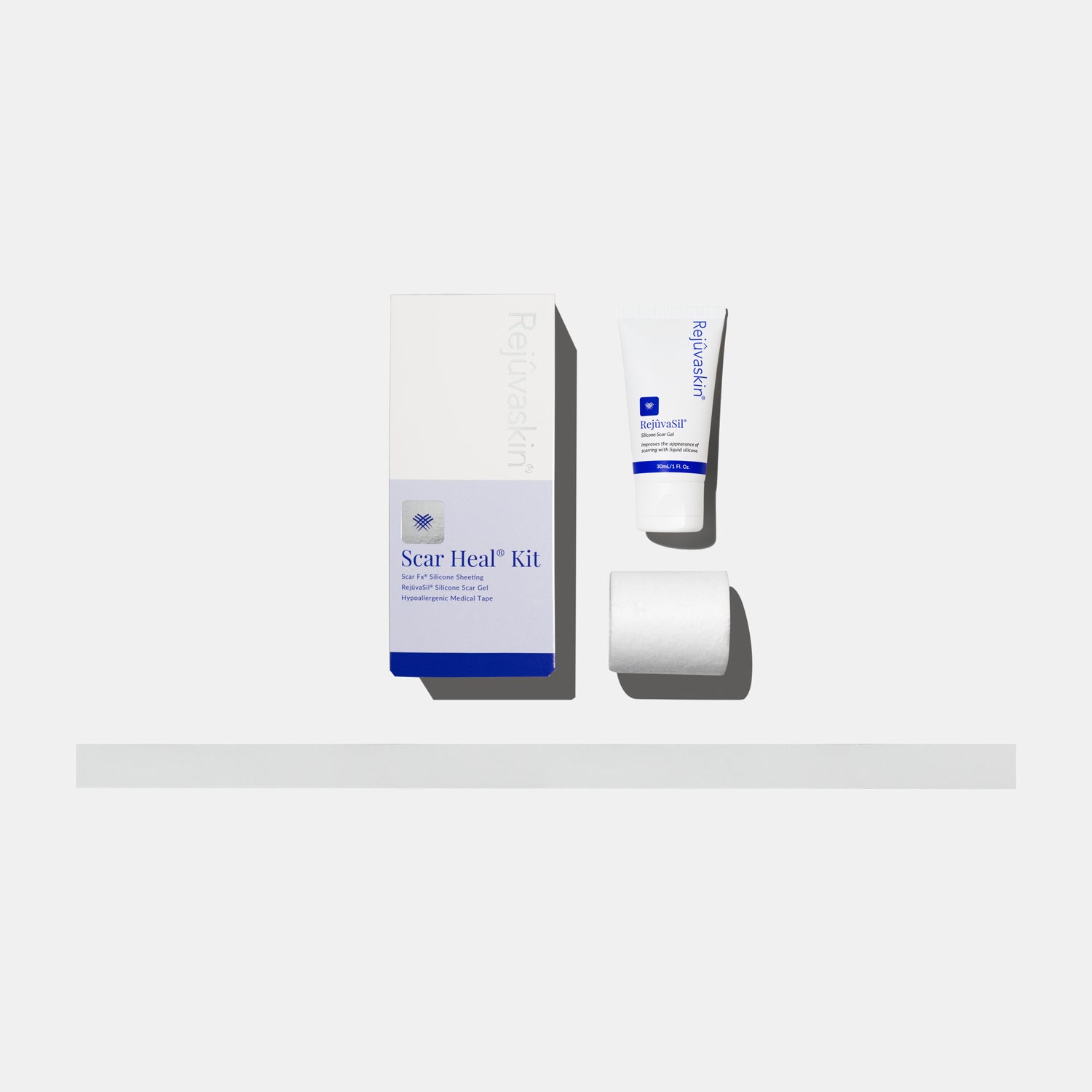


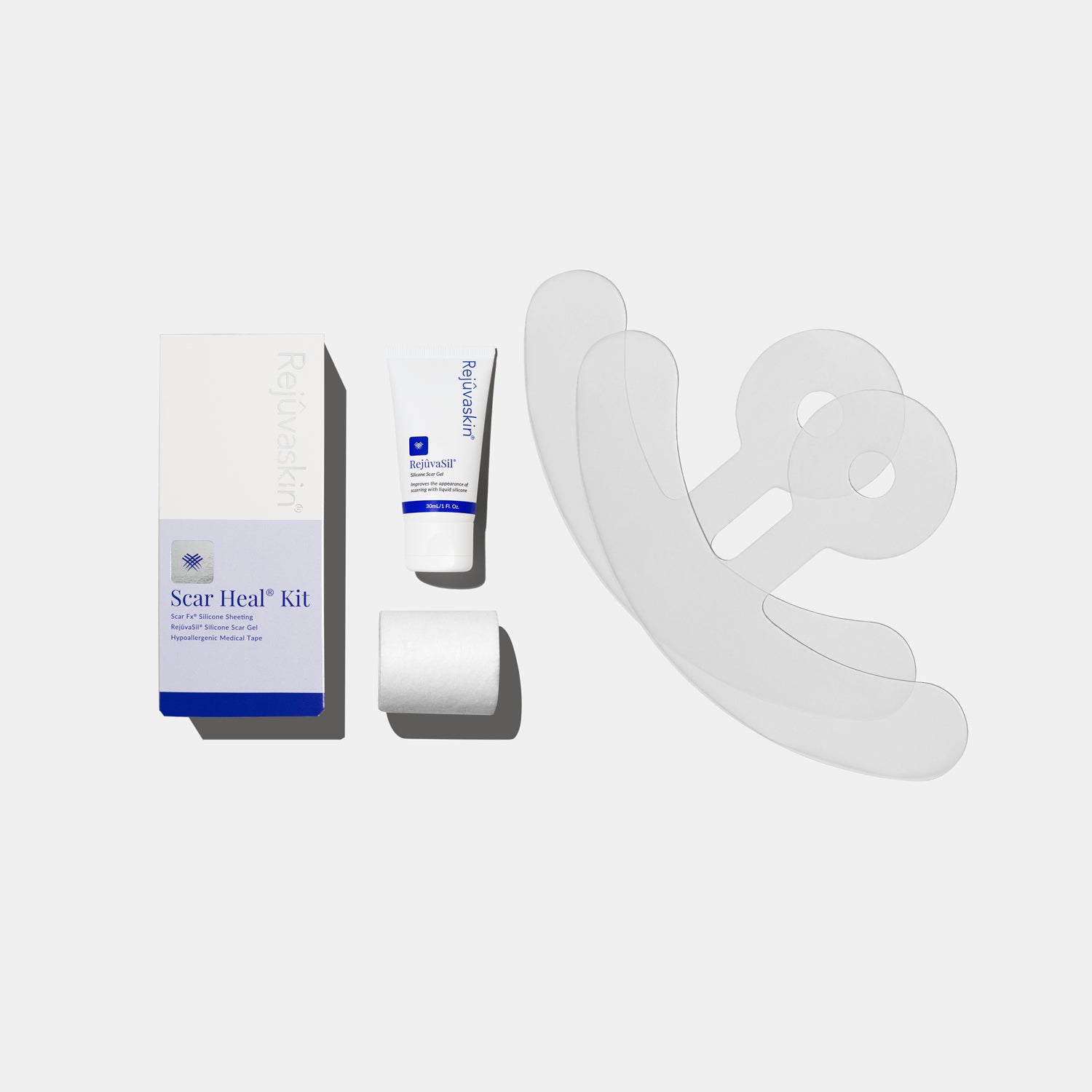
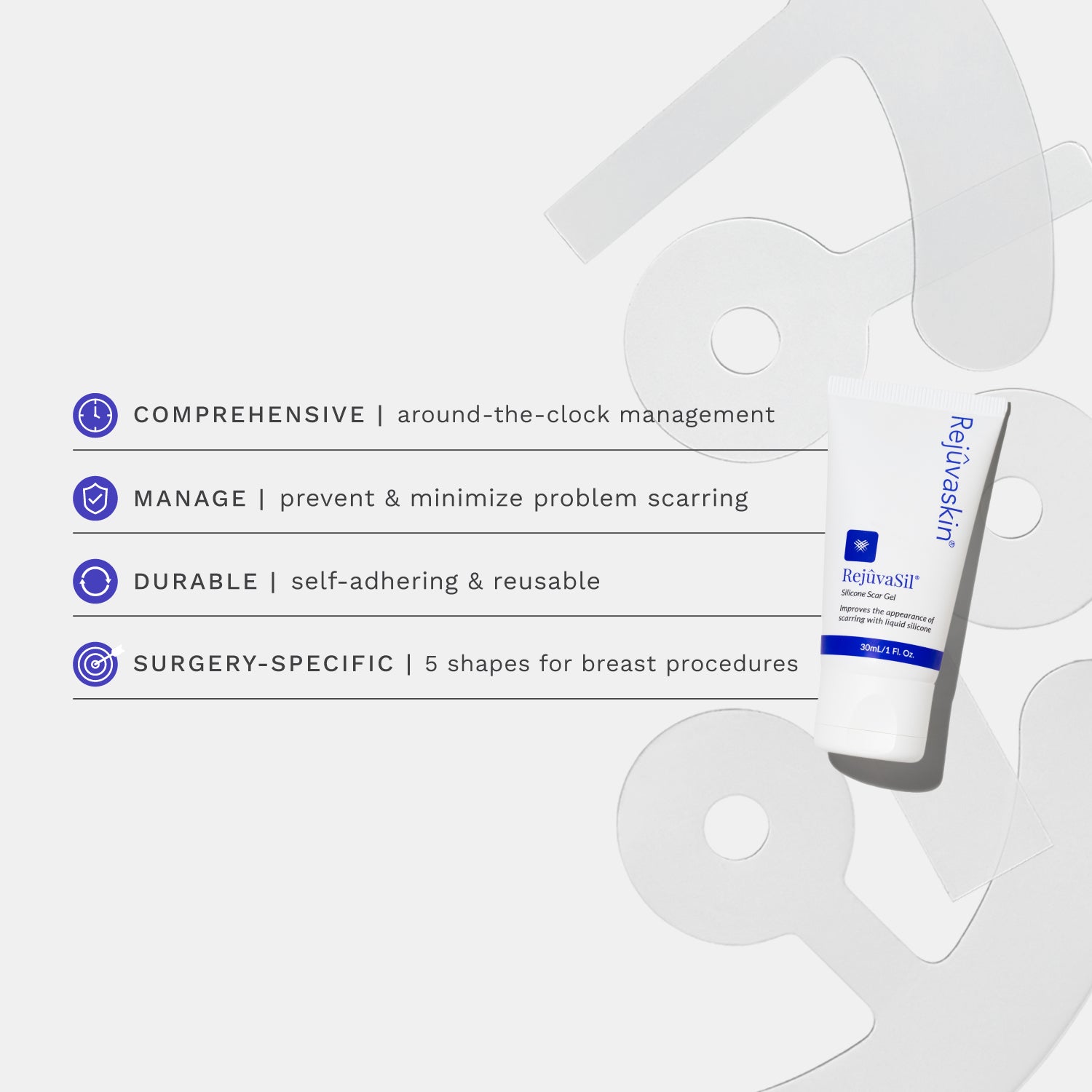
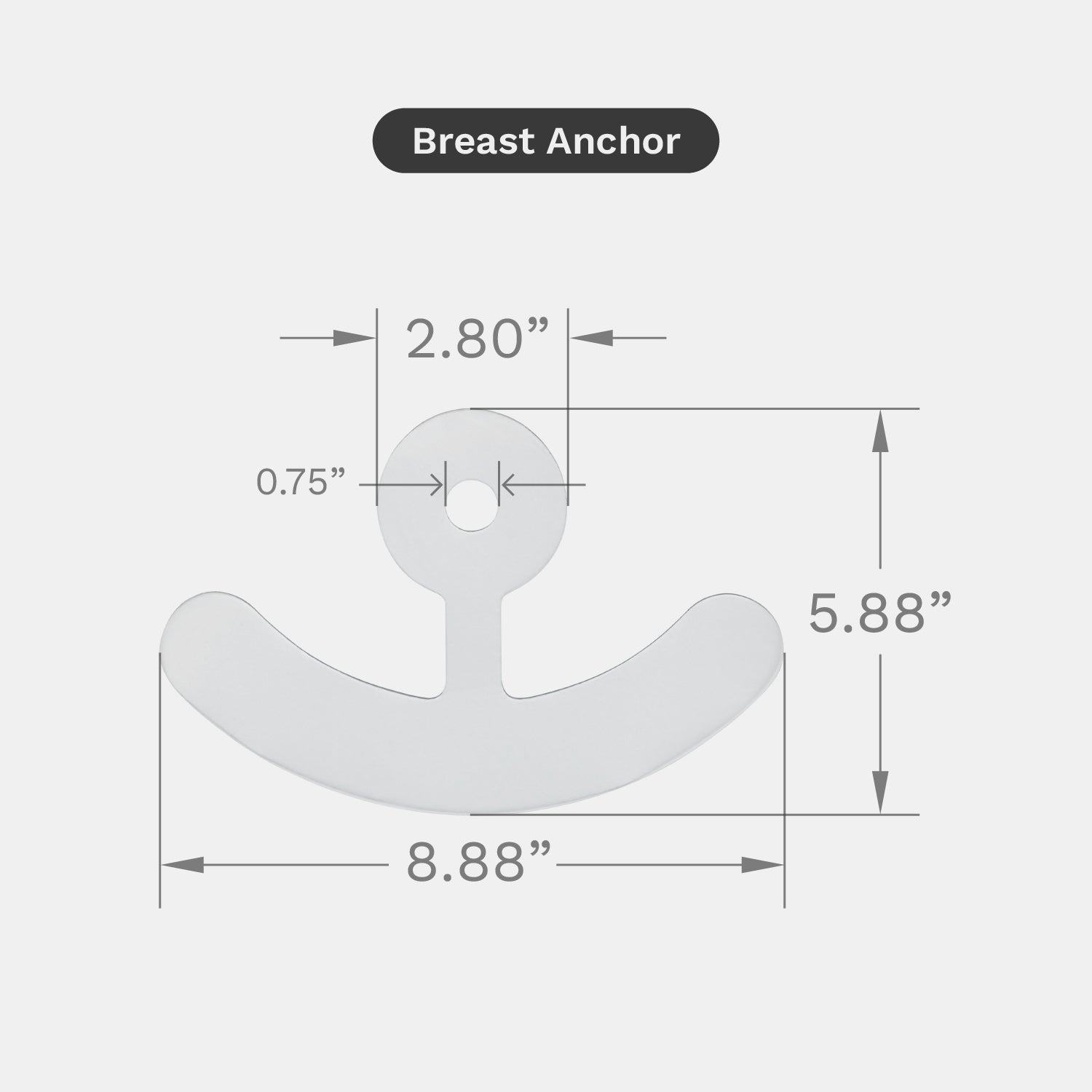
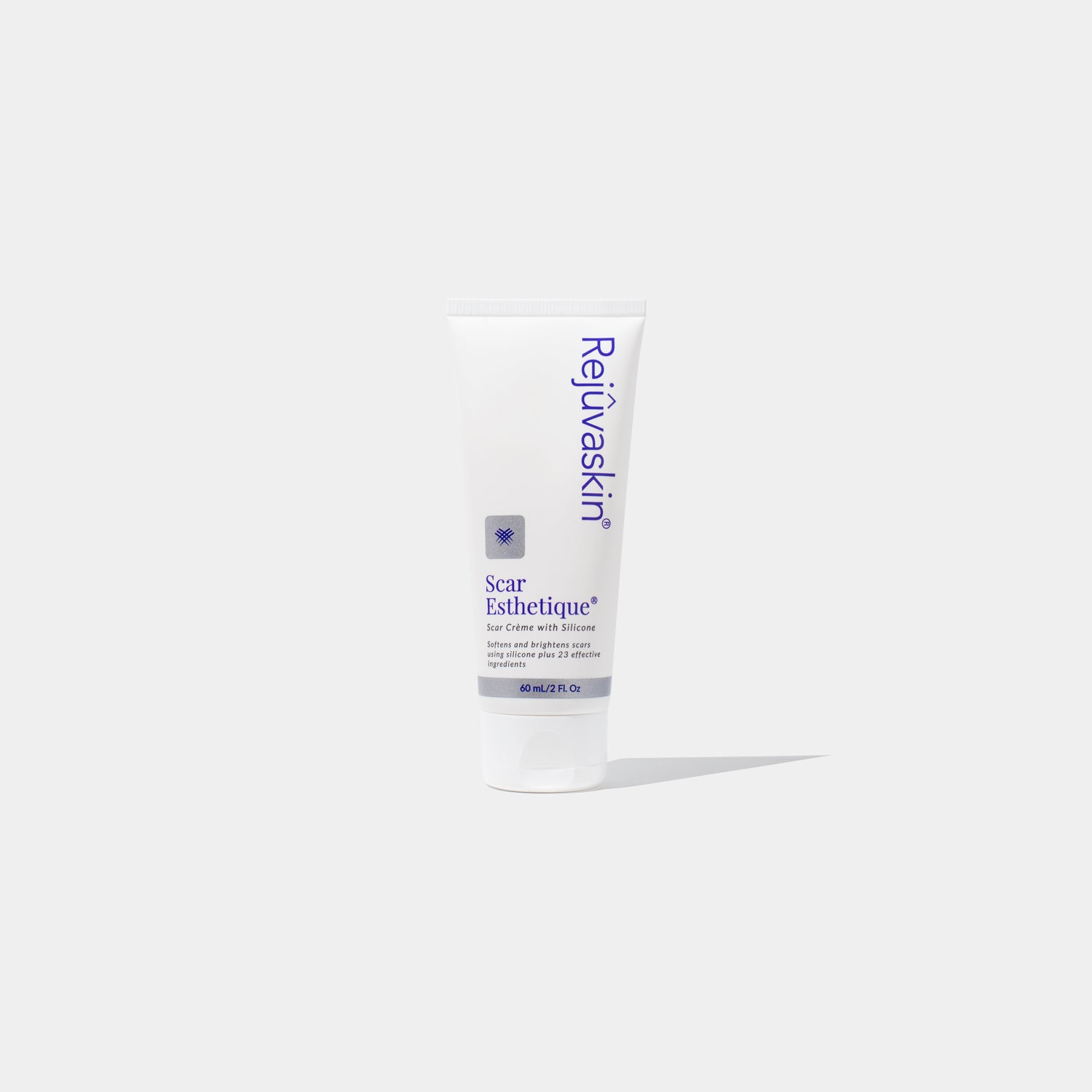
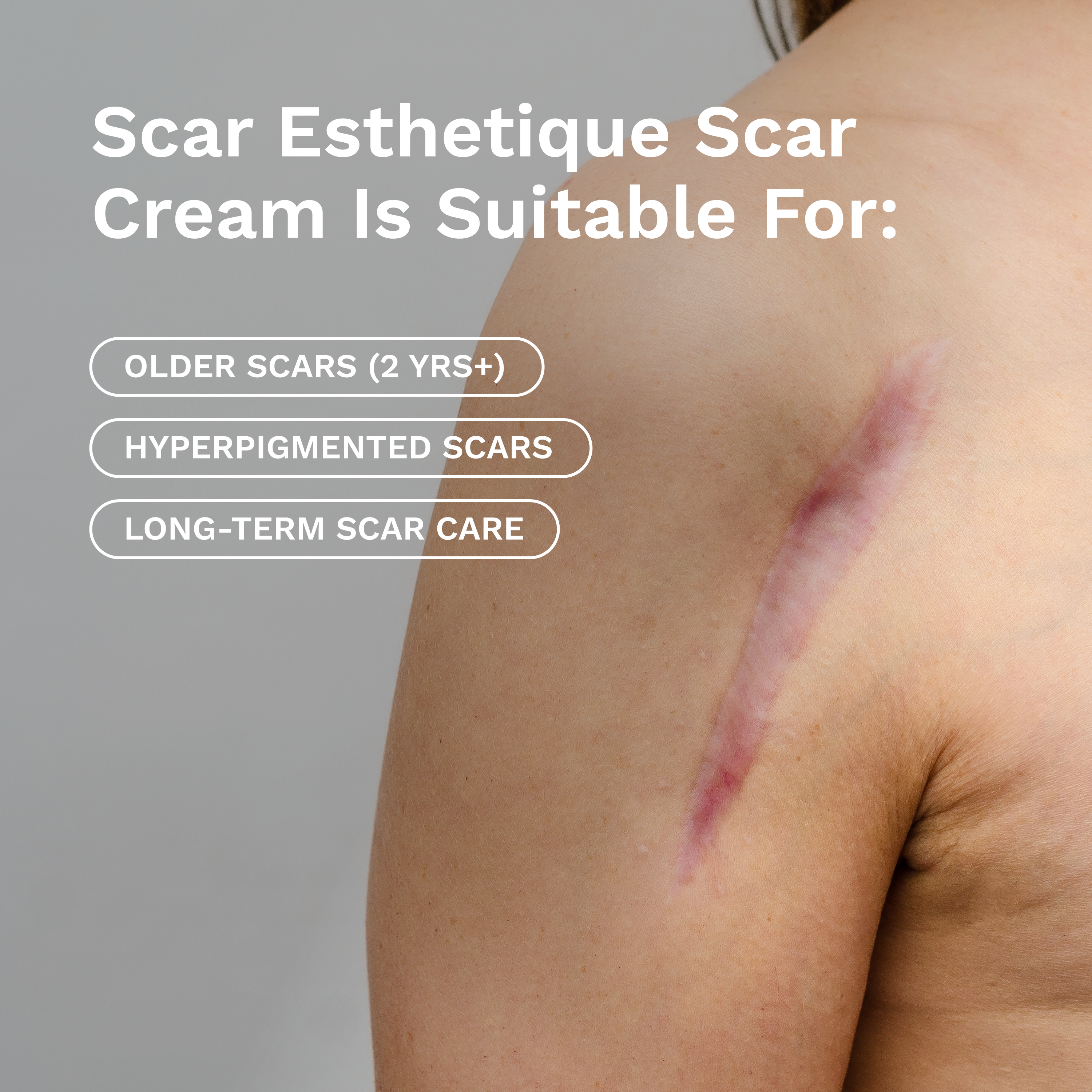








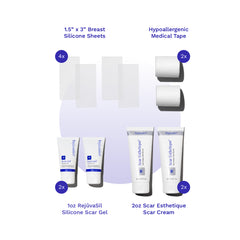
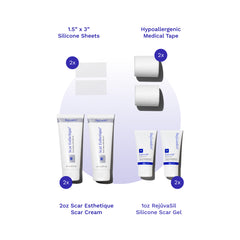

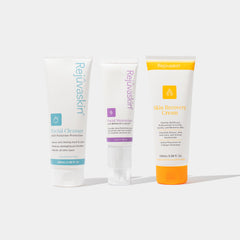
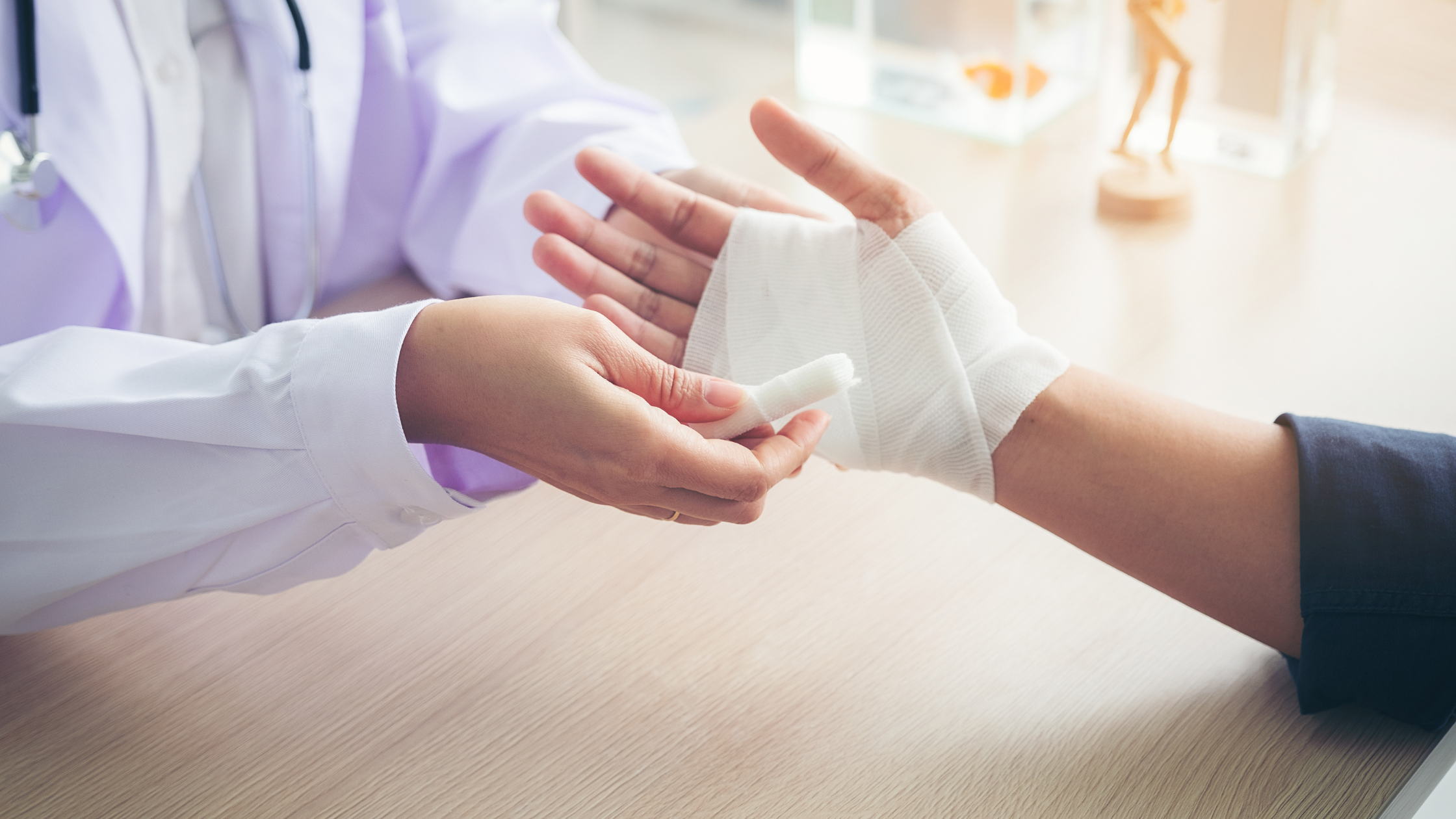
Leave a comment